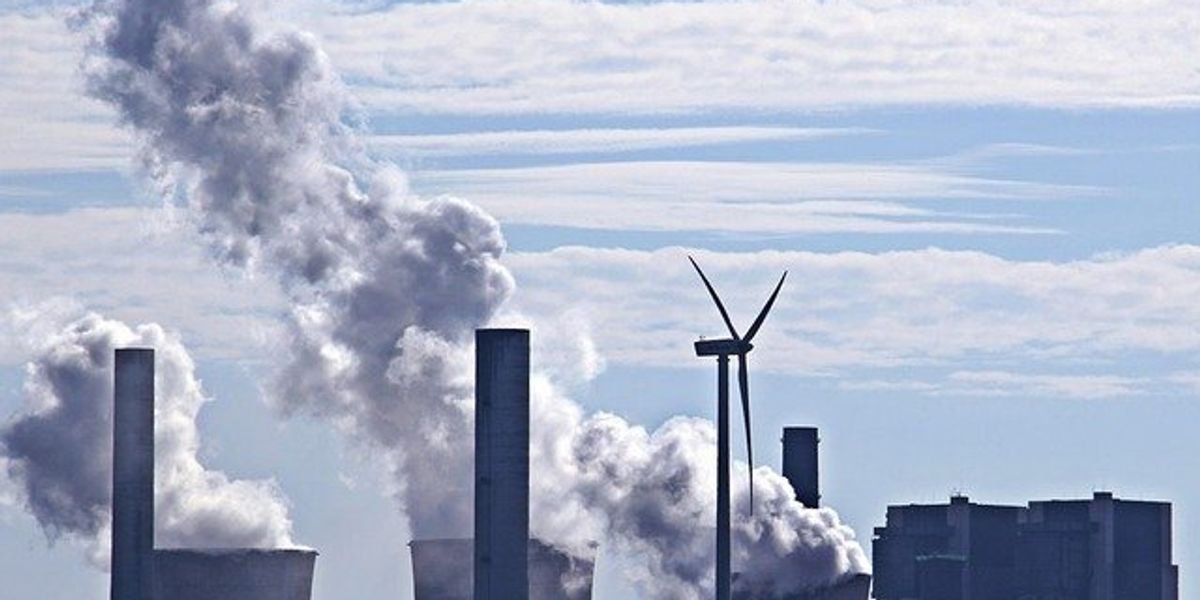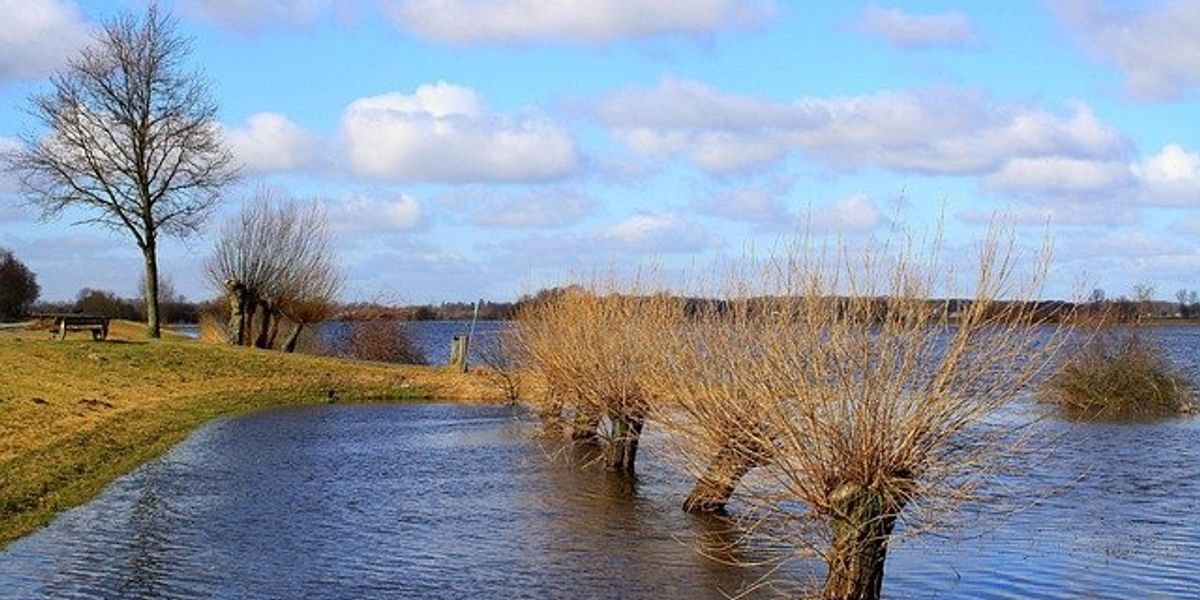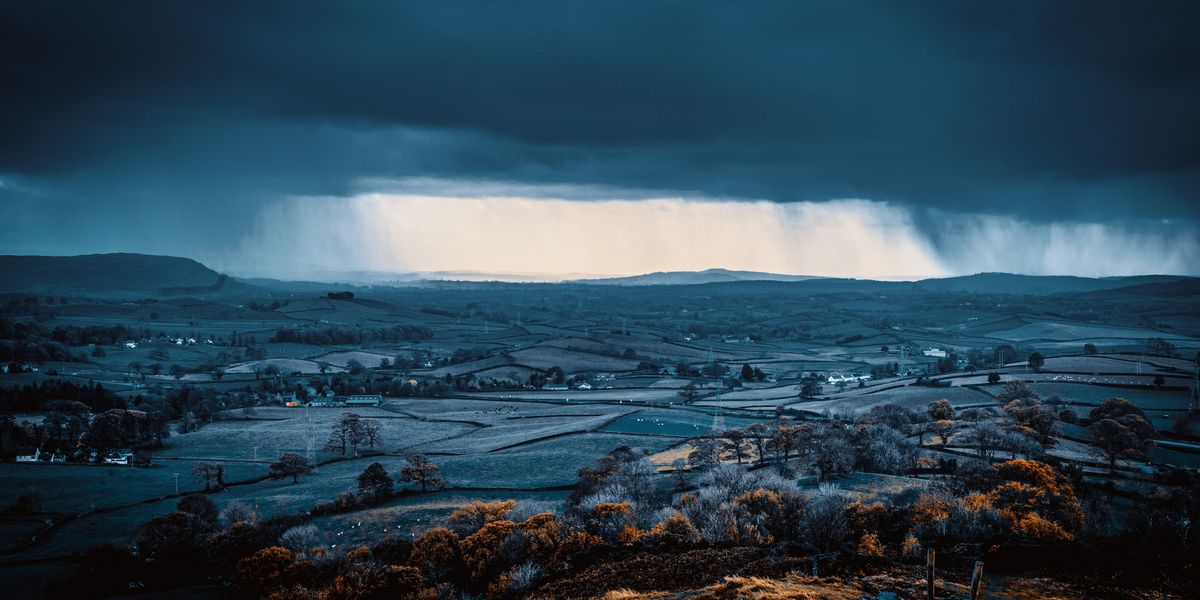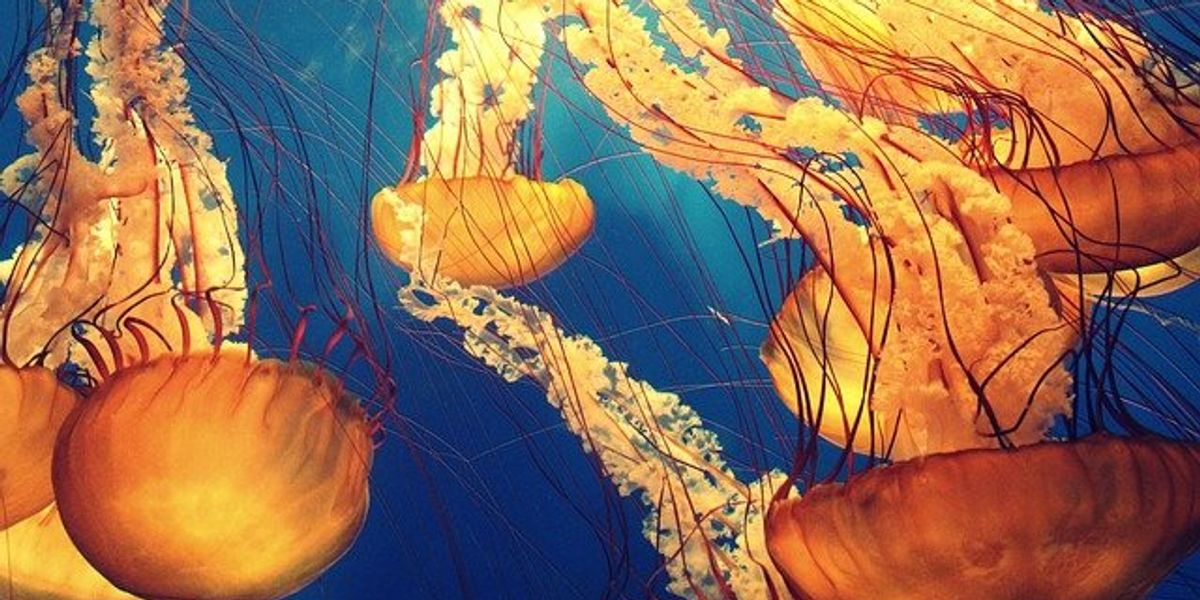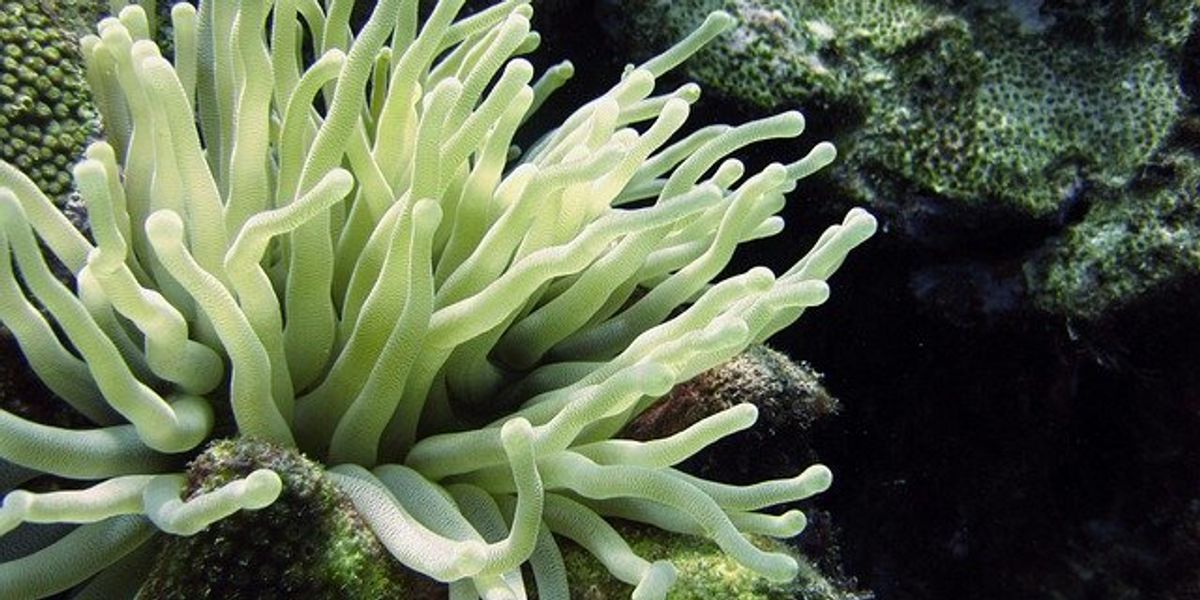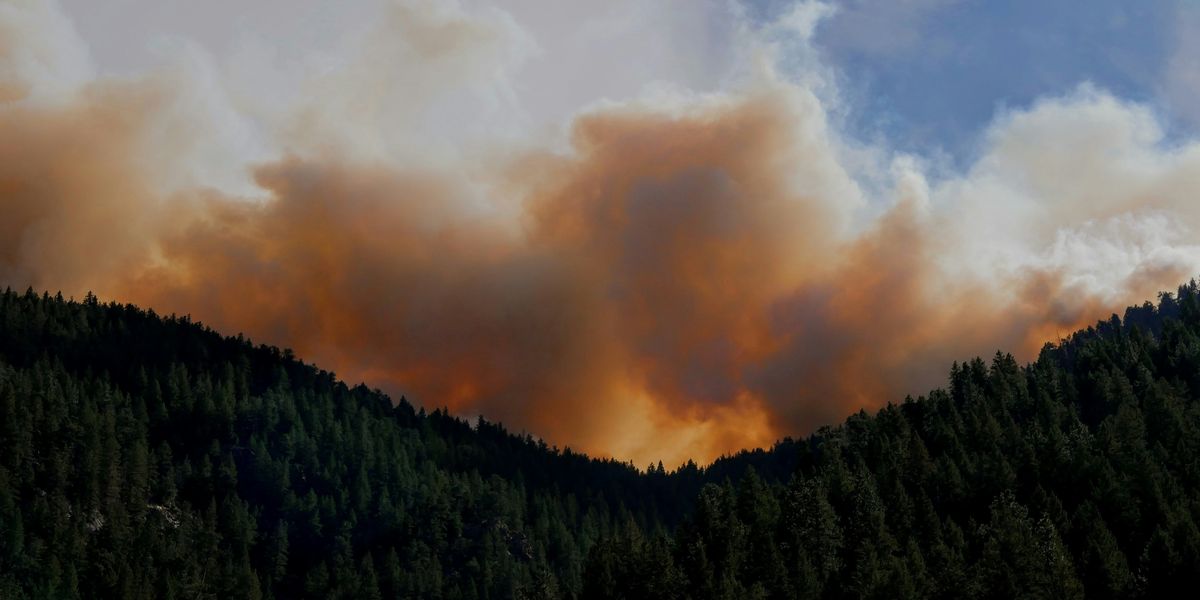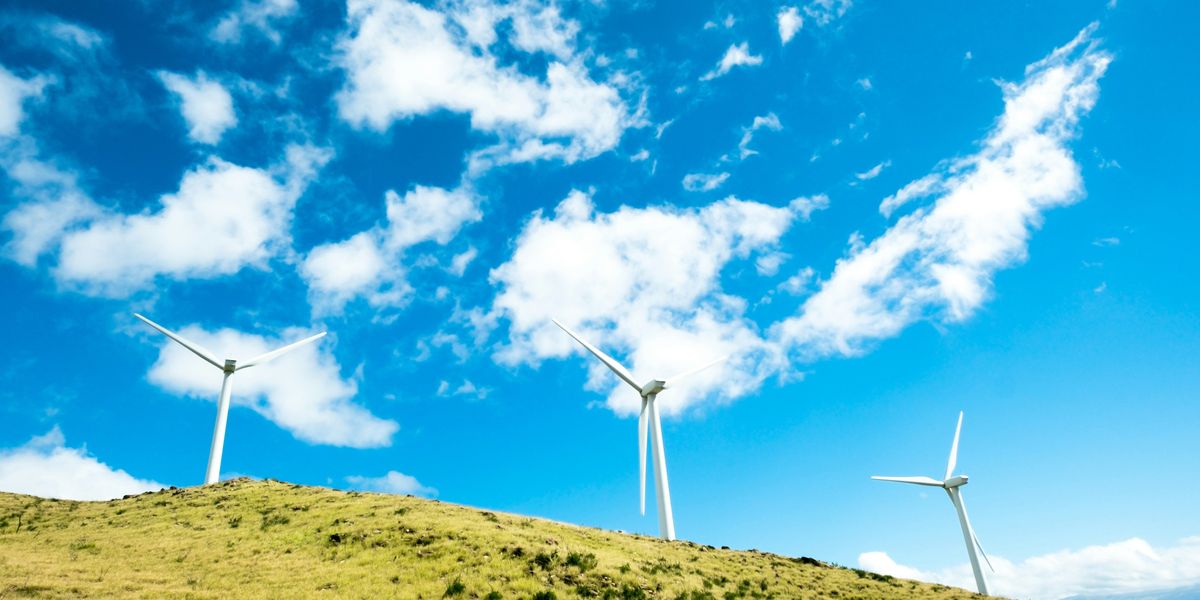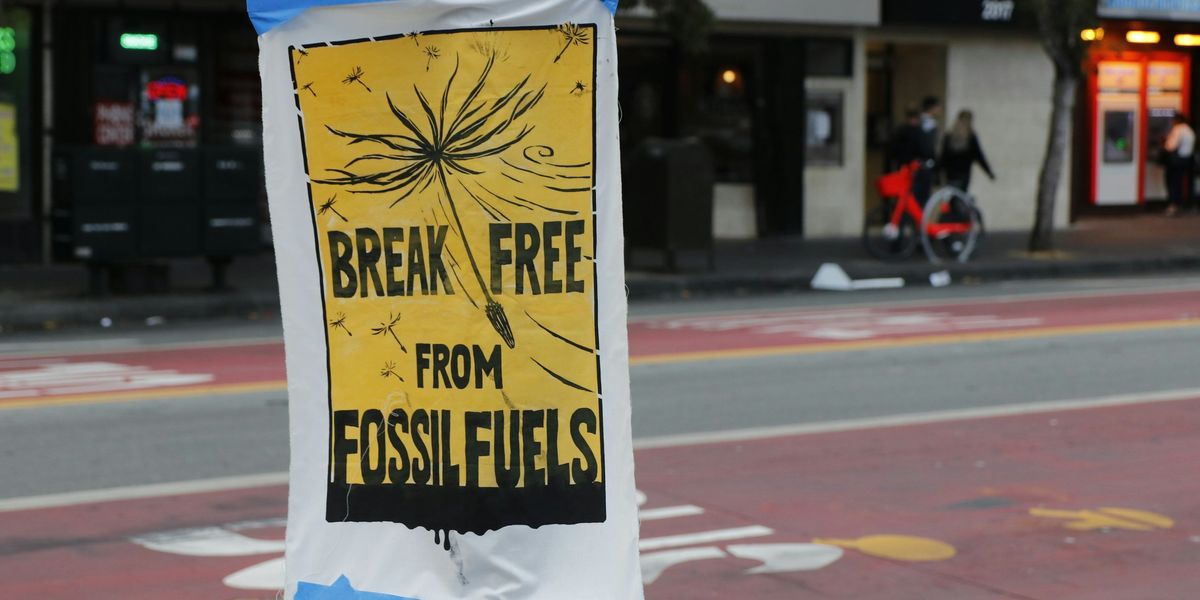roundworms
The slow death of ecology's birthplace.
One hundred and fifty years ago, a young Danish botanist named Johannes Eugenius Bülow Warming sailed out of Rio de Janeiro, bound for Copenhagen. Safely stowed with him were some of the 2,600 plant specimens he had collected over three years.
The Slow Death of Ecology’s Birthplace
Brazil’s cerrado, where a pioneering botanist traced the evolution of plants, is being plowed under for agribusiness. It could all be gone by 2030.
12.16.2016 / BY Jonathan Mingle / 1 COMMENT
JOIN THE DISCUSSION SHARE
ONE HUNDRED AND FIFTY years ago, a young Danish botanist named Johannes Eugenius Bülow Warming sailed out of Rio de Janeiro, bound for Copenhagen. Safely stowed with him were some of the 2,600 plant specimens he had collected over three years.
During free time from his day job — secretary for the paleontologist Peter Lund — Warming had ranged widely throughout the cerrado, Brazil’s tropical savanna, tromping on foot from his base in the small village of Lagoa Santa. And those roving hours bore rich fruit: Warming documented all the plant life he found in an area of 40 square miles. About 370 of the species he studied were new discoveries.
The rough contours of the cerrado ecoregion of Brazil. Estimates of its present size vary because it’s so fragmented that precise measurement is difficult.
Visual by Undark
Almost 30 years later, in 1892, Warming published a book, “Lagoa Santa,” that described in rich detail the cerrado’s unique flora — strange gnarled shrubs, thick-barked trees, waxy-leaved vascular plants — and offered novel hypotheses for how their environment had shaped their features.
In learning to read the cryptic language of its strange plant life, Warming helped give birth to a new science. He would come to be regarded by many ecologists as the founder of their field, and his book would become a foundational text of plant ecology, along with his 1895 book “Plantesamfund” (later translated as “Oecology of Plants”).
But his careful study of Brazil’s savanna failed to elevate it in the national consciousness. The cerrado has many faces: arid tablelands, open grasslands, palm-dotted marshes. But what most people see is its campo sujo, or “dirty fields” — a dry and unruly expanse dotted with low, twisted shrubs. Unlike the Amazon and the Atlantic Forest, the cerrado is not one of the biomes accorded “national heritage” status in Brazil’s constitution.
The name itself captures the nation’s collective indifference: It means “closed.” The cerrado’s 770,000 square miles of acidic, aluminum-rich soils were long written off as worthless. Then, in the 1970s, researchers at Embrapa, the government’s agricultural research agency, figured out how to “correct” those soils with prodigious doses of lime and fertilizer.
Ever since, the cerrado has been open for business.
Brazil is now the second biggest producer — and leading global exporter — of soybeans. Most are grown in the cerrado, which is now being cleared twice as fast as the Amazon. Less than 40 percent — and perhaps as little as 20 percent — remains of the native cerrado’s original extent, which once encompassed an area three times the size of Texas. Estimates of its present size vary because it’s so fragmented that precise measurement is difficult, but what is known is that the cerrado is still home to thousands of plant species that are found nowhere else in the world, along with hundreds of species of mammals and birds.
At current rates of clearing, it could be all gone by 2030.
“The soybean makers are amazingly efficient, because they have no sentimental link to the cerrado,” says the Brazilian poet Nicolas Behr. “For them, cerrado is just soil to be planted.”
Visual by Agência Brasília/Flickr/CC
“The problem is the cerrado is very easy to destroy,” says Nicolas Behr, a well-known poet in Brazil who has lived his whole life in the savanna. “People don’t want to identify with the cerrado, because it is the ugly duckling. It’s just a bunch of twisted trees for most Brazilians. They see soybeans and they say, ‘Oh, that’s beautiful, the plantations.’”
Indeed, in the cerrado region, which spans almost a quarter of the country, most Brazilians see the only piston still firing in the nation’s slowing economic engine. Amid the worst recession in its modern history, agricultural producers accounted for almost a quarter of Brazil’s GDP in 2015, and almost half of its total exports. This year, Brazilian farmers are expected to produce a record-breaking soybean crop.
“The soybean makers are amazingly efficient, because they have no sentimental link to the cerrado,” Behr says. “For them, cerrado is just soil to be planted. In the south there was pressure for land. They sold everything and bought land here because it was cheaper.” That they are outsiders, not children of the soil, Behr says, “contributes much to the destruction.”
I asked Roberto Cavalcanti, a professor of ecology at the University of Brasília who has studied the savanna for decades, if he agreed with his old friend Behr. Was the cerrado being destroyed simply because farmers and ranchers — the hard-working risk-takers who flooded into the region — lacked an emotional attachment to the scrubby-looking place?
“He and I disagree somewhat on this,” he said after some reflection. “They have a sentimental attachment to agriculture. And what they see in the cerrado is this vast untapped potential for agriculture.”
WHEN JOHN CAIN CARTER first moved from Texas to ranch in eastern Mato Grosso state 20 years ago, what he saw was rampant deforestation, a kind of Wild West land grab.
He started a nonprofit organization called Aliança da Terra (“Earth Alliance”) to build a culture of conservation among Brazilian ranchers and farmers, replacing the idea that the nation’s new prosperity depended on clearing useless woodlands. His goal was to slow the destruction just enough so that other forms of value could emerge. The group trains farmers and ranchers to practice better land management, helping them conduct a fuller accounting of their property’s varied “assets” (carbon storage, water quality, biodiversity) and come into compliance with the strictures of the Brazilian Forest Code.
“Conservation has never been profitable, and that’s why no one does it,” he says. “It needs to become quantified, an asset on your balance sheet.”
The Forest Code requires landowners in the Amazon to keep 80 percent of their land in its natural state, while producers in the cerrado are required to leave only 20 percent untouched — an imbalance that, some researchers say, sacrifices the savanna to save the rainforest. Whether to illegally clear land is for many producers a straightforward cost-benefit calculation. If the fine imposed is substantially less than the profit those extra 500 acres-worth of soybeans or pasture-fed beef will bring in an overheated global commodities market, then 500 acres of cerrado are not long for this world.
A soybean plantation on the cerrado near Mato Grosso, Brazil. Much of it goes to feed livestock in China.
Visual by iStock.com
The fundamental driver of all the rapid clearing, Carter says, “is you’ve got this economic firestorm where open land is worth four or five times the native vegetation.”
Indeed, the world at large — including commodities analysts and institutional investors — tends to see the cerrado as the world’s last agricultural frontier.
The fruits of converting the cerrado are fed into the maw of the global commodity market — soybeans to feed livestock in China, sugar cane to make ethanol to meet U.S. biofuel mandates, beef to feed the world’s growing middle classes. In a bet that these global appetites will keep expanding, the retirement investment giant TIAA-CREF has spent hundreds of millions to purchase cerrado farmland in the frontier states of Maranhão and Piauí.
Turning cerrado into cattle pastures and row crops provides wealthy investors and landowners from São Paulo to San Antonio with opportunities to become much wealthier. And it provides jobs for many rural people, in a country with 12 million unemployed.
At the kitchen table of his neighbor’s modest home in Barreiras, the agricultural epicenter of western Bahia state, Rogerio Lustosa proudly showed me the wildlife photographs he has taken around the cerrado during his years working as a technician for Grupo Mizote, a Brazilian firm that operates many large farms in the region.
“I think 20 percent is not enough to protect the biome,” he says about the Forest Code’s provision for landowners. “But we need to produce. People need to eat. It gives people jobs.” He pointed to himself.
“The vegetation is lost, but the animals can survive.” He paused. “But their numbers are going down.”
▲ The cerrado is home to a dizzying array of animal and plant species, but they are all threatened by agriculture.
Visual by iStock.com
A Brazilian marsh deer.
Visual by iStock.com
The three-banded armadillo.
Visual by iStock.com
The maned wolf.
Visual by iStock.com
AND WHAT, EXACTLY, is lost? We cannot possibly know the extent. The task of studying the cerrado’s rich web of life, which Warming started 150 years ago, is still in its early stages.
What we do know is that the biome is home to at least 11,000 plant species (45 percent of which only exist in the cerrado), 199 species of mammals, and 837 species of birds. There are enigmatic and endangered inhabitants such as the maned wolf, the giant anteater, the marsh deer, the three-banded armadillo, and the blue-eyed dove. Their habitat is fragmented and shrinking rapidly.
Then there are mysterious plants that live fractionally aboveground, but carry out their business mostly below, much in the way mushrooms fruit out of vast networks. There is the Philcoxia minensis flower, which uses underground leaves to trap and digest tiny roundworms — an adaptive strategy necessitated by the extremely nitrogen-poor soils.
There is the barbatimão, also known as the “bark of virginity” tree, which produces an anti-inflammatory extract used to prevent radiation burns in São Paulo’s most famous cancer hospital — just a hint of the vast range of medicinal potential that might be vanishing along with the cerrado.
And there is the Andira laurifolia shrub, which Warming described thus: “In this species, a subterranean axis which is branched, lignified, twisted, and as thick as an arm, gives rise to sprouts that can ramify and reach a height of 0.50 to 1 meter. The base of one of these plants can cover an area up to 10 meters in diameter.”
Warming concluded that “abiotic factors” such as climatic oscillation powerfully shaped this and other cerrado plants. Thousands of years of alternating seasons of torrential rains and blistering droughts leached away most of the nitrogen, potassium, calcium, and other nutrients from the soil, and rendered its top layer highly acidic. Seasonal fires, he speculated, had forced plants like Andira to “seek shelter underground.”
In that hidden world, ecologists see a vanishing trove of genetic information, harboring unknown drug compounds of the future and clues to plants’ inborn resilience in drought and fire – increasingly useful knowledge for our climate-altered age.
Beyond the sheer profusion of endemic species, ecologists like Cavalcanti also see a biome that performs a technically priceless set of ecosystem services. It’s the water tank for a country that has up to 16 percent of the world’s freshwater: The cerrado catches and stores seasonal rains in deep aquifers, filtering and funneling water in every direction as the source of three of Brazil’s major rivers (the Tocantins, São Francisco, and Da Prata).
It is also a vast, hidden carbon sink. Scientists now estimate that two-thirds of the cerrado’s total biomass is underground, in hardy root systems that can go many feet deep — the reason some ecologists call it the “upside-down forest.”
Those roots and symbiotic fungi store large amounts of carbon. They can also access water deep in the ground during the dry season, making it available, via the process called evapotranspiration, to the larger hydrological cycle on which the Amazon depends.
But that, too, is changing.
The spread of agriculture is dramatically altering the ecosystem services the cerrado has long provided.
Visual by iStock.com
A new study found that deforestation in the cerrado is changing Brazil’s water cycle, raising the likelihood of drought in coming decades. Analyzing satellite images of the “Mapitoba” region in the northern cerrado, the study’s authors found that the area of farmland doubled from 2003 to 2013. During the dry season, new farmland was found to recycle 60 percent less water than native cerrado.
As farmers cleared the native vegetation, they were effectively pulling the rug out from under their own feet. Reduced evapotranspiration can delay the rainy season, potentially spelling disaster for the rain-fed agriculture that now dominates the landscape. These changes are likely to affect water cycling in the nearby Amazon as well.
But this scenario is not inevitable.
José Roberto Rodrigues Peres is the head of Embrapa Cerrados, the government research agency that “corrected” the harsh soils of the cerrado and enabled the agricultural revolution that followed. Embrapa is now studying ways to halt the juggernaut it unleashed, or at least slow it down.
“Agriculture, if it’s not done sustainably, is a source of degradation,” he concedes. “But it’s possible to increase productivity without increasing area.”
He thinks much more intensification — getting more and more food out of land that’s already cleared (including degraded pastures), instead of putting more native vegetation under the plow — is possible. He has a vision of integrated crop-forest-pasture systems, with virtuous farmer-ranchers rotating soybeans, corn, and other oilseeds — engineered by his scientists to be more resilient to drought and more water-efficient — with cattle on existing pastures.
But in the four years since we spoke, extensification has won the day. In 2012, the government relaxed Forest Code restrictions on land clearing. As a result, almost 100 million acres of native cerrado could be legally cleared for cultivation — an area roughly the size of California.
Another recent study examining land use changes in the north of Minas Gerais – just north of Lagoa Santa – found that 42 percent of the original extent of savanna has been cleared since 2000.
Johannes Eugenius Bülow Warming’s studies of the cerrado would form the foundation for modern ecology.
WARMING WAS PERHAPS the first biologist to focus as much on communities of species, and on their interactions with their environment, as on individual species themselves.
One of his direct intellectual descendants was the conservationist and forester Aldo Leopold. In his 1949 classic “A Sand County Almanac,” he proposed a “land ethic” that “enlarges the boundaries of the community to include soils, waters, plants, and animals, or collectively: the land.”
“The problem we face is the extension of the social conscience from people to land,” he wrote. “No important change in ethics was ever accomplished without an internal change in our intellectual emphasis, loyalties, affections, and convictions.”
That change doesn’t come easily. One day while driving through western Bahia state, traversing a landscape one could easily mistake for Iowa, I spent a day at Parque Fioravante Galvani. The product of a partnership between the city, Conservation International, Monsanto, and the Brazilian fertilizer company Lina Galvani, the center pays local people to collect seeds from the dwindling varieties of local plants, and hosts more than a dozen threatened cerrado animals in a small zoo.
Márcia Xavier, the environmental education coordinator for the park, runs programs for local schoolchildren and members of the public throughout the week. Farmers rarely come. “They’re not interested,” Xavier says. “It’s too hippie for them, too strange.”
She showed me around the zoo, and we stopped outside a cage where an anxious maned wolf, an animal as big as a Great Dane but with a foxlike face, paced back and forth.
It was one of four of the animals there sponsored by Grupo Iowa, an agricultural firm with big holdings in western Bahia state. “We partner with companies, they provide the money,” Xavier says. “For example, Transcerrado built the parrot enclosure. Nutrin provides food care for the birds.”
As she explained the arrangement, I had a clear vision of the logical end of the place that gave birth to ecology: the last remnants of endemic cerrado life confined to cages and seed drawers, tidy and well maintained, paid for by the globally traded firms whose existence is predicated on their removal.
An anxious, captive maned wolf prompted a vision of the future of this place: the last remnants of endemic cerrado life confined to cages and seed drawers.
Visual by Jonathan Mingle
“NOTHING IS STRONGER than reality,” Behr says with a sigh. Sitting in the office of the plant nursery he runs on the outskirts of Brasília, Behr gazes at the satellite images of the acres surrounding his boyhood home, the cerrado town of Diamantino. Where once there were lagoons and grassy hills, there are now endless rectilinear patches of soybeans.
His verdict could be a fitting epitaph for his beloved cerrado. It might also serve as an epitaph for the science that was born on the savanna, which couldn’t teach us fast enough how to see the “assets” under our feet.
Or maybe we were always going to be hopeless students. The upside-down forest is hard to see clearly, so it’s even harder to see how much we might depend on it.
To really see the cerrado in all its wondrous complexity, you would need to walk at the pace of a young Eugenius Warming, pausing to examine the arm-thick root structure of the Andira laurifolia. Or pull over your car and wade up to your waist into a marsh to admire a rare variety of palm, as Behr sometimes does. (“He’s a member of this international palm association,” his wife told me, “and they write each other these letters that begin ‘Dear Palm Lover…’”)
The market — animated by our desires — moves so much faster than our learning curve. Our loyalties are to our own interests. Our affections rarely extend to scrubby woodlands and carnivorous plants. Our convictions don’t run that deep underground.
But Behr has what could be an alternative epitaph.
He wrote what is probably the most famous poem about the cerrado. It refers to one of Brazil’s most celebrated soccer players, Garrincha, who was born with bowed and twisted legs. When people watched him play, they saw not deformities but a player of uncommon skill and grace.
The poem holds out hope that we might yet look closer, and learn to see the scrubby cerrado in a whole new light, while there’s still enough of it to save:
Nem tudo
Que é tortoÉ errado
Veja as pernas
Do Garrincha
E as árvores
Do cerrado Not all
That is crooked
Is wrong
Look at the legs
Of Garrincha
And the trees
Of the cerrado
Jonathan Mingle is a freelance writer whose work has appeared in The New York Times, The Boston Globe, Slate, Quartz, Atlas Obscura, and the Los Angeles Times. He is the author of “Fire and Ice: Soot, Solidarity, and Survival on the Roof of the World,” about the health and climate effects of black carbon pollution.
Reporting for this essay was supported by the Middlebury Fellowship in Environmental Journalism.
Secrets of life in the soil.
Diana Wall has built a career on overturning assumptions about underground ecosystems. Now she is seeking to protect this endangered world.
Rachel Cernansky1
13 September 2016
Article tools
PDF Rights & Permissions
Benjamin Rasmussen for Nature
Diana Wall wields a coring tool in the grasslands of northern Colorado.
Early on a cold spring morning, Diana Wall is trying out a tool normally used to make holes on golf courses — and she can't contain her excitement. Her team has always used more laborious methods to take samples of soil and its resident organisms. “Oh, that's a beautiful core,” she says as one student bags a sample filled with tiny roundworms. “Hello, nematodes!”
Wall, a soil ecologist and environmental scientist at Colorado State University in Fort Collins, has come to this site about an hour east of the campus to collect data for one of her latest experiments. She and her colleagues are creating an artificial drought in a patch of grassland by covering it with temporary shelters. They expect that predatory nematodes will die or enter a type of suspended animation, leaving the parasitic nematodes that prey on plants to dominate the ecosystem. “How do plants respond below-ground to drought?” she wonders.
Wall has been asking — and answering — similar questions about soil for decades. She has become one of the most celebrated and outspoken experts on the hidden biodiversity in dirt, having studied soils and their inhabitants in nearly every corner of the world. She has a special fondness for Antarctica, which she has visited almost every year since 1989. It was there that she and a colleague made a landmark discovery, demonstrating that the soil in one of the driest spots on Earth is home to some animal life and not sterile, as many had thought.
The same drive to challenge orthodoxy also helped her to advance in a field in which women were once rare. “Many times, I felt like I was hitting the glass ceiling and got discouraged,” she says, before emphasizing how things have improved. “Today, I love seeing so many women in Antarctic and other research.”
Lakes under the ice: Antarctica’s secret garden
Alongside her own experiments, Wall has become an ambassador for soil science and conservation — at a time when soil ecosystems are being devastated by forces such as erosion, pollution, pesticides and climate change. Soil degradation over the past two centuries or so has released billions of tonnes of stored carbon into the atmosphere, and this discharge could accelerate, speeding up climate change. Beyond that, says Wall, the threats to soil could jeopardize food production, water quality and the health of humans, plants and animals. The current path, she says, “leaves our terrestrial biodiverse world as we know it very uncertain”.
The efforts of Wall and other scientists to raise the profile of soils have been making an impact. The United Nations declared 2015 the International Year of Soils, and in May, Wall travelled to Nairobi to launch the Global Soil Biodiversity Atlas — a compendium of information developed by a team of more than 100 scientists, which she helped to lead.
David Montgomery, a geomorphologist at the University of Washington in Seattle, says that Wall has inspired many other researchers in their science and outreach on topics important to society. “We need more first-rate scientists willing to speak in those arenas.”
Wedded to the ice
This month, Wall is busy planning for her next trip to Antarctica, which will come, as usual, just after Christmas. Her colleagues joke that those journeys keep Wall young because she often crosses the International Date Line on her birthday, essentially erasing the day from the calendar. Assuming that she passes her physical — for which she is swimming and cycling — this trip will be her 27th to Antarctica.
Byron Adams
Wall at work in the Antarctic Dry Valleys.
Wall is 72 and has seemingly boundless energy. Tall and thin, she speaks quickly and picks up the pace as she describes the zoo of organisms in soils, from nematodes to the vast array of microbes. She emphasizes how bacteria and other microorganisms provide services that humans take for granted: filtering water, stabilizing soil, improving air quality and recycling nutrients that enable crops to grow. “I like to think of it as this factory underground,” she says.
Wall credits her mother, a biology teacher, with helping to spark a lifelong interest in biology. Raised in Lexington, Kentucky, Wall got her PhD in plant pathology from the University of Kentucky in her home town. In 1972, she left for the US west coast to pursue postgraduate research in nematology — convinced that nematode parasites had a lot to reveal about how life behaves above ground.
California was a shock at first. “That was eye-opening to me, because I had never crossed the Mississippi River, and it was — oh my god, where are the trees?” she says. But she ended up liking it there, and the University of California, Riverside, remained her home for much of the next two decades.
She strung together a series of grants to keep her work going, confident that soil microorganisms were more significant than most researchers realized. “Originally, I was just convinced these all make a difference and I was waiting to be proven wrong,” she says.
Forensic science: The soil sleuth
Wall focused at first on nematodes in deserts and arid croplands, conducting the bulk of her research in southern California, New Mexico and Michigan. By the late 1980s, she was seeking ways to understand a species' impact on an ecosystem. “If you want to find out how a plant parasite has an effect on a root or a predator, how do you exclude everything in the soil except that?”
She tried chemicals to kill off species, but they also harmed what she wanted to study. Then a colleague suggested that Wall go somewhere without plants, where the food web was simpler. “I tossed around a number of places,” she says. “And we ended up in Antarctica.”
She and her colleague Ross Virginia from Dartmouth College in Hanover, New Hampshire, decided to collect samples in the McMurdo Dry Valleys, a series of ice-free basins near the US McMurdo research station. The valleys receive no snow or rain, and humidity is so low that researchers have found the mummified remains of seals that made their way into the valleys thousands of years ago. Previous researchers had discovered nematodes and other life near glacier-fed streams that trickle during summer, but experts thought that the dry soils making up most of the valleys were barren.
On one of Wall and Virginia's first visits to the Dry Valleys, they had just six hours to collect as many samples as possible before the helicopter returned to pick them up. They found nematodes in about 65% of the samples. “I couldn't believe it,” she says. Ultimately, this showed that life can thrive even in the most inhospitable underground environments, revealing that major ecosystems were being overlooked.
Wall has returned to the Dry Valleys every field season except 1992, when she didn't receive funding for the trip. To recognize that long-running research, the US Geological Survey named valleys there after Wall and Virginia.
Their work in Antarctica dovetailed with discoveries that Wall had previously made about how nematodes cope with extremely dry conditions in the US Southwest. In the Chihuahuan Desert, Wall and her colleagues showed that the worms rely on anhydrobiosis1: they shed most of their water and put metabolic activity on hold. Wall says that the nematodes end up looking like Cheerios, the ring-shaped dry cereal.
Agriculture: State-of-the-art soil
When she went to Antarctica, Wall and her colleagues found that Dry Valley nematodes use the same mechanism2 to cope with arid conditions there3.
With one eye focused on tiny nematodes, Wall kept the other on the bigger picture of how these creatures fit into ecosystems. This was all part of her ever-growing desire to understand and highlight the importance of life underground — something routinely ignored by many researchers until roughly the past decade. Studies that tracked the decomposition of fallen leaves and other organic materials, for example, tended to overlook the role of soil organisms.
Wall says she grew tired of that limited perspective. “We wanted to show that animals are important in these processes.”
So in 2001, she started a global, multiyear project to measure the impact of soil animals. Her team sent mesh bags filled with hay to colleagues at more than 30 sites around the world. Placed in various locations, the bags attracted worms, beetles and other types of soil invertebrate, while control bags excluded them. Wall's team then analysed the carbon content in each bag and compared the rates at which the organic matter decomposed with and without the soil animals. The results supported Wall's point: soil fauna increased decomposition rates significantly in many regions4. A follow-up study5 found that excluding soil fauna reduced decomposition rates by a global average of 35%.
Those studies helped to convince researchers to pay more attention to life in soil (see ‘Soils under siege’). “We now understand how key these organisms are to many ecosystem processes,” says Amy Austin, an ecologist at the University of Buenos Aires.
Source: Global Soil Biodiversity Atlas
The litter finding means that there could be big changes in how carbon moves throughout ecosystems as forces such as climate change alter soil communities.
Wall and her colleagues have seen some of this up close during their most recent field season in Antarctica. In as-yet-unpublished work, they found that the dominant nematode in the Dry Valleys, an endemic genus named Scottnema, has been declining in number, whereas a nematode that lives in wetter soils, Eudorylaimus, has been increasing, thanks to the melting of ice and permafrost. “It looks like there's going to be a species shift,” she says. “It's a fight for habitat.”
Scottnema is Wall's favourite nematode. “It's living in this harshest environment, mostly by itself, and it's just so recognizable,” she says. But that's not the only reason that she has concerns about the species' decline.
The two nematodes feed on different carbon sources in the soil, and population changes could alter the rate at which underground carbon escapes into the atmosphere. If so, the carbon-storage potential of the soil in Antarctica — a crucial region for absorbing carbon dioxide from the atmosphere — could change. Shifts in soil biota elsewhere on the planet could also affect how much carbon remains locked up, she says.
Emissary for soil
In August this year, Wall found herself at the White House talking about soils with other experts and policymakers as part of a national effort to prevent erosion and promote soil health. It was the latest scene in a role she has increasingly embraced over the past 15 years — to bring soil health to the global stage.
As Wall's research career blossomed, she took on more leadership positions. She served as president of the American Institute of Biological Sciences in 1993 and the Ecological Society of America in 1999. By that point, her involvement in these organizations was making her think bigger. “I'd been pretty concentrated on the Antarctic research,” she says. “I thought I should be doing more.”
She began participating in and leading initiatives that were increasingly global in scope — chairing, for example, the International Biodiversity Observation Year starting in 2001, which funded research projects to highlight the importance of biodiversity around the world. In 2011, Wall became the founding science chair of the Global Soil Biodiversity Initiative, the group behind the soil atlas that was launched in May. Looking forward, Wall wants to integrate data on soil health and biodiversity into global policies for mitigating large-scale environmental challenges. And she's talking to colleagues about launching a big US experiment to unravel the relationships between soils, biodiversity and health. “Conservation and protecting species is a very old idea, and so is soil conservation. But only now are these two ideas coming together,” she says.
While campaigning for soils, Wall has also been a champion for women in science. When she was starting out, there weren't many role models for women in her field. And when she made her first trips to Antarctica, she made do with men's long underwear and boots, and endured eight-hour flights on military aircraft that lacked sit-down toilets.
Wall was initially turned down for a tenure-track position at the University of California, Riverside, in the late 1980s — a decision that she and others suggest was related to her gender. Jill Baron, director of the North American Nitrogen Center at Colorado State University, says that how Wall recovered from that rejection is emblematic of her character. “She moved on into this stellar career,” says Baron. “And she's been working to make sure that other young women who come in don't have to ever have that again.”
That kind of drive makes a big impression on people just entering science. Ashley Shaw, a PhD student studying under Wall, recalls their first meeting. “She was just so enthusiastic about her science and what she was working on,” says Shaw. “I walked away feeling like I could save the world.”
Wall joined Colorado State University in 1993 to become director of the institution's Natural Resource Ecology Laboratory. There, colleagues say, she attracted interdisciplinary, accomplished scientists, which elevated the stature of the lab both on and off campus. She now serves as founding director of the university's School of Global Environmental Sustainability.
There, in an office covered in photos and paraphernalia from Antarctica, she talks eagerly about her goals for the future — and takes offence when people ask her if she plans to retire. “Whether I pass my physical to go to Antarctica or get too old and have to have a wheelchair dropped for me from the sky,” she says, “I want to keep working on the issues.”
Nature 537, 298–300 (15 September 2016) doi:10.1038/537298a
Tweet Follow @NatureNews
References
Whitford, W. G. et al. Soil Biol. Biochem. 13, 417–425 (1981).
Article
Treonis, A. M., Wall, D. H. & Virginia, R. A. Funct. Ecol. 14, 460–467 (2000).
Article
Wall, D. H. & Virginia, R. A. Appl. Soil Ecol. 13, 137–150 (1999).
Article
Wall, D. H. et al. Glob. Chang. Biol. 14, 2661–2677 (2008).
García-Palacios, P., Maestre, F. T., Kattge, J. & Wall, D. H. Ecol. Lett. 16, 1045–1053 (2013).
ArticlePubMed






